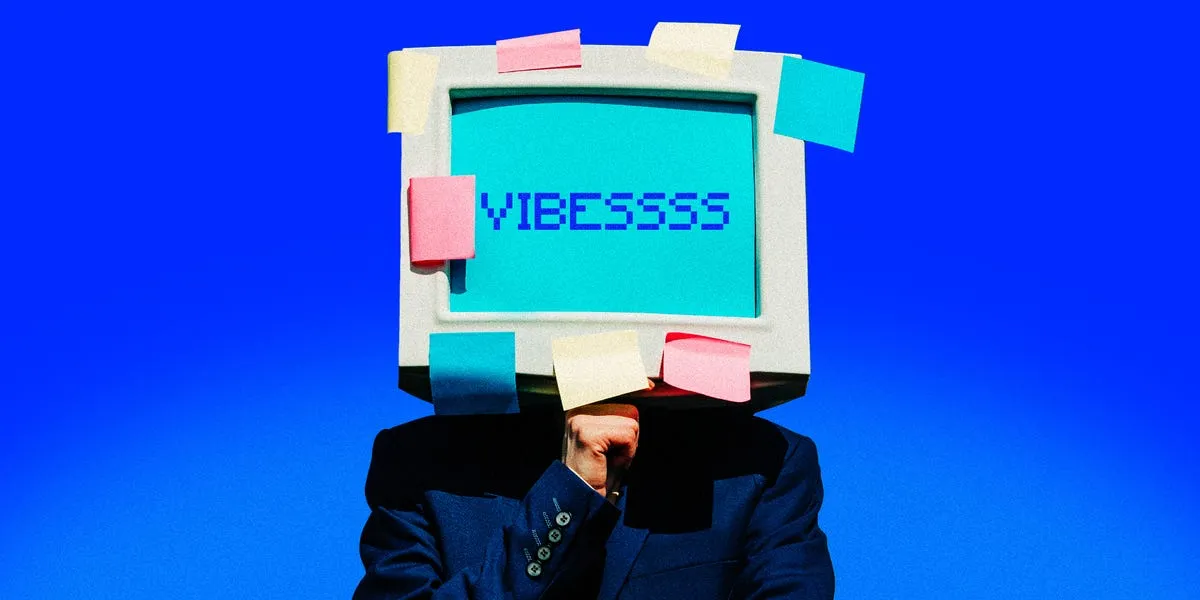
In recent times, generative AI has revolutionized the landscape of software development, marking a significant shift away from traditional coding practices. This transformation has led to the emergence of a trend known as vibe coding, where companies are increasingly seeking individuals who can blend creativity with technical skills. Big Tech executives, including Sundar Pichai of Google and Mark Zuckerberg of Meta, have openly discussed the implications of AI on the future of work, suggesting that the role of mid-level engineers may soon be diminished. Klarna's CEO, Sebastian Siemiatkowski, has even described himself as an amateur coder, emphasizing the accessibility that vibe coding brings to the coding process.
As the corporate world embraces the concept of vibe working, a small yet growing number of companies are posting job openings for unconventional titles such as Vibe Growth Manager. These roles focus on experimenting with AI technologies and rapidly developing marketing prototypes. Recently, Microsoft introduced its version of vibe working, which utilizes intelligent tools within programs like Excel and Word to streamline document and spreadsheet creation. This innovative approach allows users, regardless of their technical proficiency, to effectively communicate and generate content through AI-powered features.
The rise of vibe coding has given birth to new categories of content creators. Platforms like Mea's AI app have launched a vibes feed for AI-generated videos, while Sora's AI video platform is promoting the idea of vibe creators. This new breed of content creators relies on synthetic AI imagery, resulting in a fresh form of influence that diverges from traditional influencer content. The term "vibening" has captured attention as a way to describe the evolving nature of white-collar work, which increasingly emphasizes free-flow and improvisation rather than rigid structure.
Vibing has become a way of life for many employees, particularly among the Gen Z workforce. Terms like lazy girl job and quiet quitting reflect a shift away from conventional workplace norms. Younger workers often seek less formal environments, leading to a rebranding of corporate culture under the umbrella of vibing. Managers have adopted practices such as regular vibe checks to gauge employee satisfaction and engagement. Some companies have even introduced the role of Chief Vibe Officer (CVO) to foster team connections and enhance workplace morale.
While the concept of vibe working is appealing, experts warn that it may obscure the importance of mastering essential skills. Emily DeJeu, a professor at Carnegie Mellon University, cautions that rebranding work as a vibe could undermine the expertise necessary for effective job performance. She likens vibe coding to jazz music, where successful improvisation relies on years of mastery. The misconception that vibing equates to effortless work may lead to exploitation if employers fail to recognize the value of skilled labor combined with AI.
The software development landscape is undergoing a significant transformation due to the rise of AI-generated code. As coined by OpenAI's Andrej Karpathy, the term vibe coding reflects a shift in focus from coding to reviewing AI-generated outputs for accuracy and functionality. Employers are now prioritizing candidates with AI skills, with a 2024 Microsoft report revealing that 71% of business leaders would prefer a less experienced candidate with AI knowledge over a more seasoned worker lacking such skills.
Despite the growing demand for AI skills, there remains a substantial gap in training opportunities. Less than one-third of workers have received formal AI training from their employers, according to a Jobs for the Future survey. This disconnect has prompted many individuals to take it upon themselves to learn AI technologies, leading to a grassroots movement of experimentation. However, this organic approach can result in varying levels of success and inconsistent outcomes due to the subjective nature of vibing.
As workers increasingly turn to AI tools, there is a risk of producing subpar content, often referred to as workslop. Emilie DiFranco, vice president of marketing at Marketri, emphasizes the importance of developing a clear strategy before engaging with AI. While AI can enhance productivity in data review and consolidation, it is crucial for marketers to maintain the human touch in crafting initial strategies and objectives. Relying solely on vibes without foundational research may lead to disorganized and ineffective marketing efforts.
As the trend of vibing continues to gain traction in the corporate world, it is essential to recognize that work remains work. While the playful language surrounding vibe working may attract a younger workforce, it should not distract from the rigorous demands and expertise required in various roles. As Amanda Hoover, a senior correspondent at Business Insider, points out, the integration of generative AI tools should enhance productivity without compromising the quality of work expected from employees.